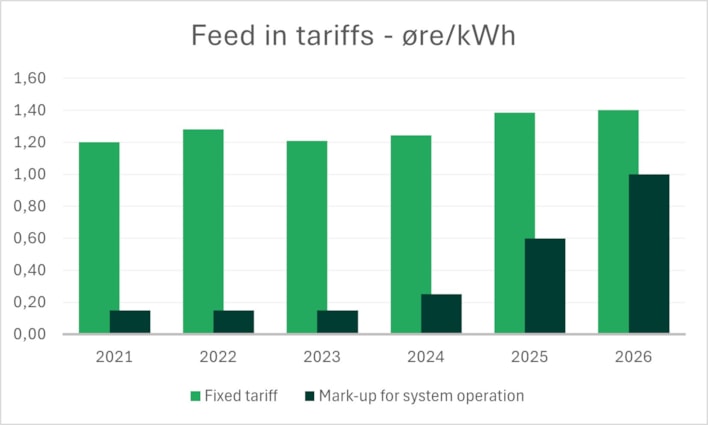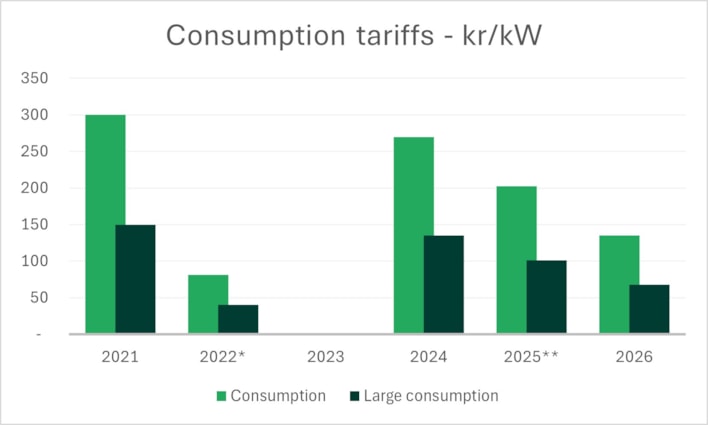The tariff consists of a fixed part and an energy part.
The fixed part of the tariff is generally set for one year at a time and applies for the period 1th of January to 31th December. This is how we calculate the tariff.
The energy part consists of marginal loss rates for each exchange point in the transmission grid, which are calculated and updated weekly. See the overview in Nettweb.
The fixed part: This year’s tariff rates
| Tariff | 2026 | 2025* > 1.7 |
2025 < 30.6 |
2024 | 2023 | 2022* > 1.4 |
2022 < 31.3 |
|
|---|---|---|---|---|---|---|---|---|
| Production | øre/kWh | 1,40 | 1,38 | 1,38 | 1,24 | 1,21 | 1,28 | 1,28 |
| Production, mark-up for system operation | øre/kWh | 1,00 | 0,60 | 0,60 | 0,25 | 0,15 | 0,15 | 0,15 |
| Consumption | kr/kW | 135 | 135 | 270 | 270 | 0 | 0 | 300 |
| Large consumption (average) | kr/kW | 67,5 | 67,5 | 135 | 135 | 0 | 0 | 150 |
| Reactive power | kr/kVAr | 40 | 40 | 40 | 40 | 40 | 40 | 40 |
*Due to high congestion revenues the comsumption tariffs were set down during the year in 2022 and 2025.
The energy part
Updated marginal loss rates per point can be found in Nettweb.
Marginal loss rates for each exchange point in the network are calculated and updated weekly. When calculating the energy part, the price for the relevant bidding zone is used.
Price cap on the calculation of the energy part
All grid companies in Norway received a temporary exemption on October 14, 2022, to limit the size of the energy part in the grid rent until the end of 2023. The Norwegian Energy Regulatory Authority (RME) has now extended the exemptions by one year, until the end of 2024.
Based on this exemption, Statnett will limit the electricity price used to calculate the energy part to 350 NOK/MWh in 2024.


*The tariff for consumption was changed from 325 NOK/kW to 0 NOK/kW from April 1, 2022. This gives an average tariff for consumption of 81 NOK/kW.
Tariff rates for individual components
Statnett also owns network facilities that are not part of the transmission grid. The annual grid rent for such facilities is set individually and notified directly to the relevant customer. The tariff model is further described in the document Tariffing of individual components (in Norwegian).

